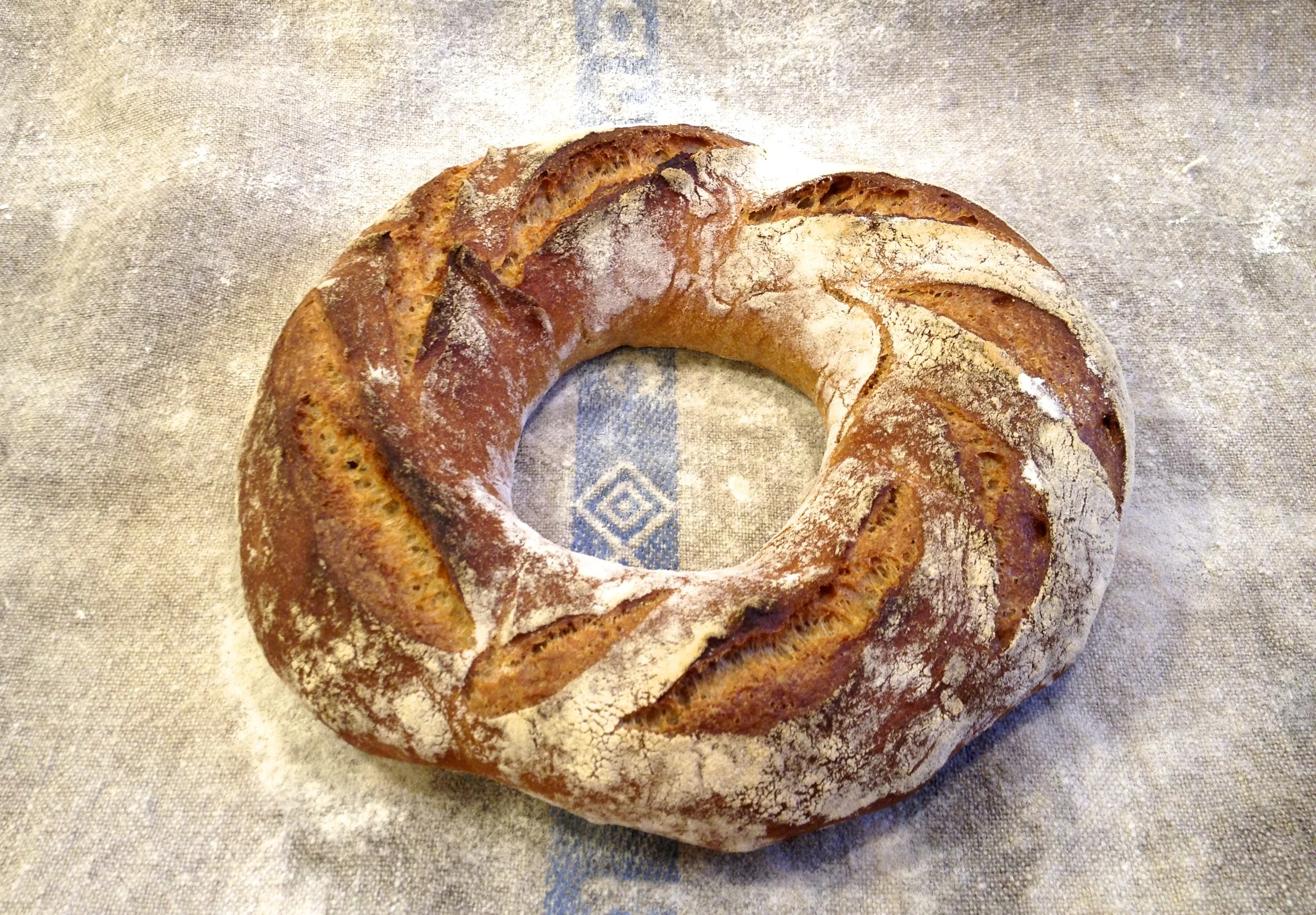Lovin' the New Oven
Lovin' the big oven, especially for pizza
July 28, 2010
Bakers, especially obsessed home bakers, are always looking for an edge: a special tip, technique, tool or prayer that will bring their loaf or pizza closer to perfection.
Count me among them. I've baked at home for more than a decade, and although I've made terrific bread - even baguettes - I never thought my pizza made it into the same league as that from Seventh Hill Pizza on Capitol Hill or 2 Amys in Cleveland Park.
I'd tried many recipes, overnight rises, two-day rises, no-knead doughs, sourdough starters, soft imported Italian 00 flour and strong American bread flour, and had gotten pretty good results. But they weren't eye-popping. They weren't extraordinary. And that's what I wanted. Amazing pizza!
I needed another solution: a wood-fired brick oven, which would give me the 750-to-850-degree heat that would produce stellar pizza.
So this past spring, when I got an e-mail from the Bread Bakers Guild of America (yes, I joined a bakers guild), I perked up. Jeffrey Hamelman, the 59-year-old master baker at King Arthur Flour in Norwich, Vt., was teaching a wood-fired-baking class.
I'd never taken a class in baking, but King Arthur sells excellent flour, and one of my bibles is Hamelman's "Bread: A Baker's Book of Techniques and Recipes" (Wiley), revered by amateurs and professionals alike. So in my world, this class was akin to an invitation to Rome for a two-day audience with the pope.
Building the kind of oven I had in mind would easily cost over $1,500. Never mind what it might do to our Capitol Hill back yard. Would it be worth it? In early July, I traveled to bucolic Norwich and to King Arthur's baking education center to find out.
Sated by a baguette schmeared with local goat cheese, I arrived in class, where a fire was already roaring in the massive wood-burning oven in the corner.
My fellow classmates: a guy from Los Angeles who was already selling bread he baked in a wood-fired oven in his back yard; a young professional baker from Ohio; a baking teacher from Zingerman's, the famous bakehouse in Ann Arbor, Mich.; a high school culinary teacher from Massachusetts; a chef from Tennessee; and several enthusiasts like myself. No beginners, though only a few had baked in a wood oven.
As soon as Hamelman strode in, the revelations began, starting with a simple flatbread whose dough he had mixed up in the morning from whole-wheat flour, water, salt and oil. This yeast-free dough had sat for eight hours. He told us to slice off 2-ounce portions and roll them into balls.
After they rested for a half-hour, we rolled them into eight-inch disks, then folded the thin dough around a spicy tomato concoction Hamelman had whipped up with feta and herbs.
Now the fun began. We took giant wooden peels and slid the flatbreads into the hot oven, about eight feet deep. My half-moon puffed up in about 30 seconds. After a minute I flipped it to darken the underside and then removed it to a piece of aluminum foil, wrapping it to keep the crust from hardening.
The aroma was intoxicating. Some students tore into their flatbreads as soon as they were cool enough to handle. I gave mine five minutes and then devoured it. It was among the best flatbreads I've eaten.
We also mixed pizza dough and shaped loaves for the next day, since these would benefit from a long rise. In the process, we got tips you glean only from a baker. "The simple act of keeping your hands dry with flour prevents the skin of the loaf from ripping," which would hamper a good rise, Hamelman reminded us.
The next morning, Hamelman fired up the oven again. To determine whether an oven was hot enough, bakers traditionally threw in some flour to see how quickly it browned, or tossed in paper to see how fast it would darken or catch fire. "There was a whole genre of foods that developed to let a baker know when the oven was ready," said Hamelman, who relied on a laser thermometer.
Pizza was one of those foods, and we would make it for lunch. The dough was wonderful, stretching out easily. Everyone did a different topping; my baking partner and I chose tomato sauce; roasted portobello mushrooms, onions and red peppers; and fresh Vermont mozzarella. I slid the pie deep into the oven, inches from the embers.
The outer crust puffed up quickly, and after a minute or so I rotated the pie with the peel so the other side would char slightly by the hot fire. Then I used the peel at the last minute to lift the pizza toward the dome, getting extra heat on top. It took 2 minutes.
The pie was extraordinary, better by far than anything I'd made at home.
After lunch, Hamelman raked out the coals. With the oven temperature falling a bit, we baked our bread: seeded loaves we'd formed the day before, and then a traditional Quebec whole-wheat loaf.
Both baked beautifully and, because they were made with sourdough, they were still fresh when I returned to Washington the next day.
The crust was toasted, the crumb soft and pliable. When eaten with a couple of artisan cheeses I'd brought home from Vermont, the bread sealed the deal. I told my wife: "I think we're building a brick oven in the back yard. Maybe this summer."
Recipe


